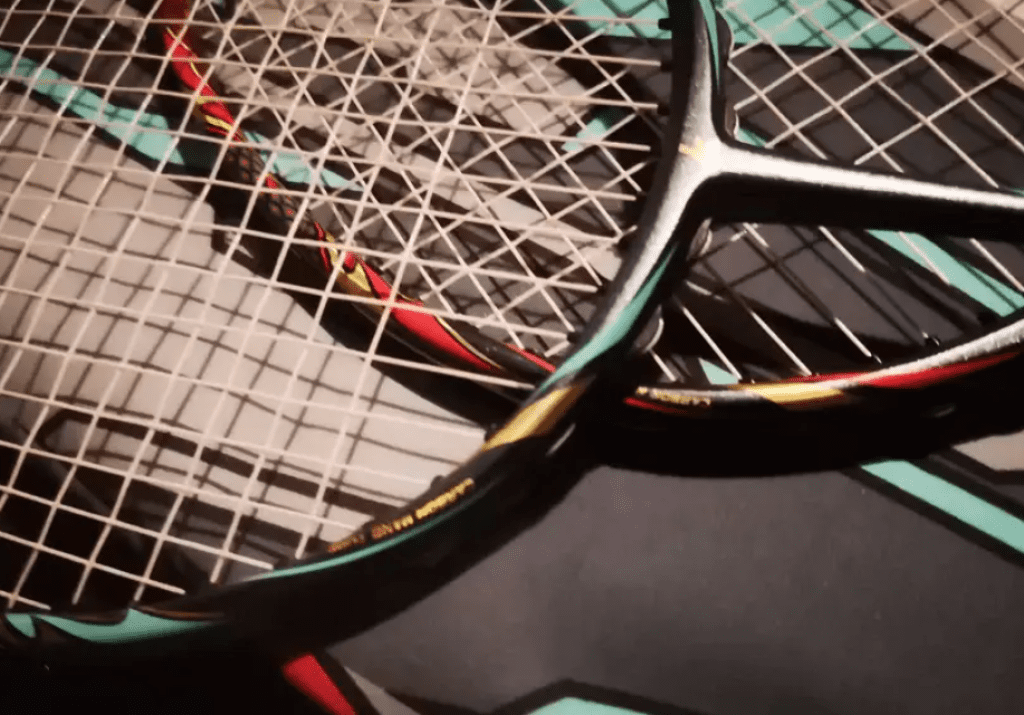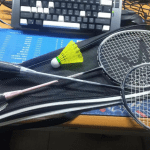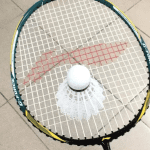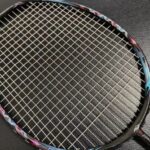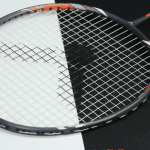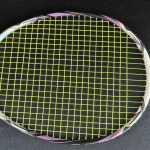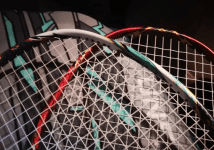
Badminton Racket Kawasaki Razer1916 Reviews
Many players believe that among the numerous second-tier brands, Kawasaki is the true king, with materials sourcing and technical capabilities once rivaling those of the top three. Despite strong sales in the low-end market, it’s challenging for any brand to gain significant recognition among advanced players. Through collecting and testing various equipment, it’s not hard to notice that many beginners in badminton courts are using Kawasaki models like the Ninja or Blue and White Porcelain for casual games, while seasoned players occasionally bring out old Kawasaki models or the Master series to demonstrate their skills.
After Kawasaki’s wave of re-releases, it’s indeed time for them to showcase some high-quality new products.

Specifications: The red model weighs 84±1g with a balance point of 290±3mm and a medium-stiff shaft, slightly on the stiffer side. The blue model weighs 82g with a balance point of 293±3mm and a medium stiffness shaft. Both have had their grips removed, with the red one weighing 88.9g and having a balance point of 304mm, and the white one (with towel grip) weighing 90.1g and having a balance point of 300mm. The 6.5mm shaft is made of 46T+30T materials, while the frame, featuring a full-slot two-in-one boxed design, is made of 30T+40T materials with a 76-hole string bed and a small frame. The racket is guaranteed for 30 pounds of tension, with some components manufactured by CBN, and recommended string tension is 26-28 lbs with VBS66N strings.
Trust me, this is a product that will deliver visual surprises the moment you receive it.
The manufacturer has provided the Razer (雷蛇) series with corresponding colored square-shaped racket covers that are stylish and attractive. After experiencing the Spear 18, I often noticed that some manufacturers focus more on product details. For example, Kawasaki still makes high-quality racket covers, and the inner insulation layer of the square bag and the design of the racket cover itself are features that many manufacturers are unwilling to add. For players who no longer need the original racket cover/bag and prefer to use a more practical racket bag for matches, these enhancements might seem unnecessary. However, considering that the racket still needs to be shipped from the seller to the buyer, improving these aspects undoubtedly enhances the overall experience.
Upon unboxing, a second visual feast awaits. Both rackets are very attractive. Although their design language is similar, the differences in color and the use of snake scale patterns make each racket visually appealing in its own right. The matte finish, along with thematic decorations on the wings and head of the frame, perfectly complements the names of the rackets. The blue version uses a combination of black, white, gold, and blue spiral stripes, while the red version features a blend of black, red, and gold. Subjectively, the blue version appears more elegant, while the red version exudes a certain aggressiveness, which I believe aligns with their respective performance characteristics.

After removing the grips, the differences between the two rackets become apparent when holding and swinging them. Although both fall within the 4U weight range and are light and fast with low balance points, the red version has a slightly more noticeable head-heavy feel. Frankly, given that the Razer 1916 uses a frame from the “Second Brother” series and has a thin shaft, I naturally assumed that these rackets would excel in offensive singles play. However, the official specifications and actual handling surprised me. Although the frame design isn’t extreme in reducing wind resistance, the smaller head size and still-rounded frame edges make the Razer exceptionally quick to swing. Without a doubt, the characteristics of these rackets are well-suited for the fast-paced exchanges typical in doubles.
However, based on past experience, Kawasaki’s rackets rated above 3.5 stars often have a significant skill threshold. The original Razer 19 was already a 5-star racket, and the 1916 uses 5-star materials as well. So, will this high-end model also become a “lofty flower”? Fortunately, during the warm-up, both rackets quickly dispelled any concerns I had about my physical condition. Despite the small frame, the fast swing speed and well-adjusted shaft stiffness significantly lowered the difficulty of handling the racket. As long as your stroke technique is proper, you can easily find the feel for transferring power to the shuttle during active shots. For advanced players, the only adjustment needed might be to the timing of shots due to the fast swing speed. As for intermediate players, the Razer does not have a high power threshold or low tolerance that would exclude them. This racket can also be an excellent choice for those looking to experience the feel of a small frame, alongside the Bonny Infiniti 003/004/007, with a slightly lower skill requirement compared to the Radiant 6 and much lower than the Breakthrough BZ. As you use it, you might find yourself wondering, “Why am I so proficient with this? How many times have I actually used a small frame?”
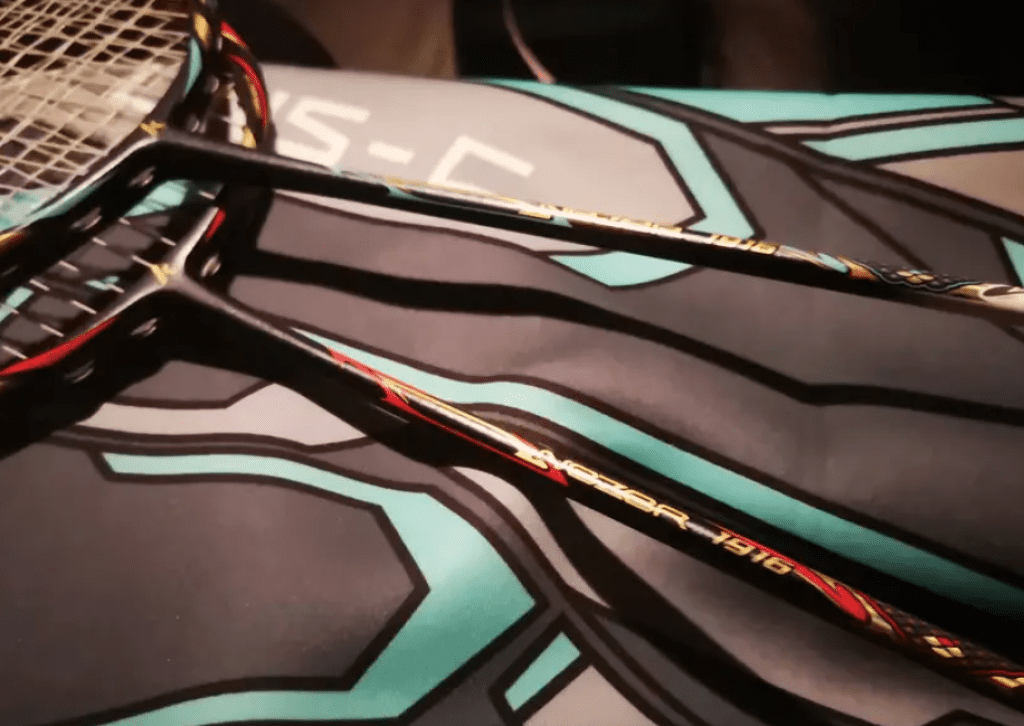
As mentioned, the Razer twins deliver speed as their answer. Whether it’s the red or blue version, their performance in the front court during doubles is impressive, with sufficient agility. While the impact during flat exchanges in the front court may not be obvious, if you’re playing mixed doubles with the male player positioned slightly back, the Razer’s handling of push shots to the waist, underarm, or body will demonstrate its capabilities. It’s not just quick; the moderate but not excessive shuttle hold also provides the fine-tuning needed for adjusting your shots and allows for more decisive action in challenging situations. If your racket preparation is adequate, players who have mastered short bursts of power from their fingers and wrists can unlock even more aggressive and threatening shots. Between the two, the slightly heavier blue version with a lighter head has an edge in swing speed and stability.
Dominating the net is crucial, especially in serve-and-return battles, and the Razer performs well here. Whether it’s a quick drop or push in return of serve, the moderate shuttle hold offers a sense of control. This feeling was particularly pronounced in comparison to the Breakthrough TK100 that I recently tested. In closely matched encounters, if you’re determined to force your opponent to lift the shuttle, taking the high point and forcing a drop won’t result in awkward situations like hitting too high or too far. The effect is even better if you can practice small shots before the match. However, if you aim to deceive or outmaneuver your opponent’s front-court guard with a flick or push to the far corners, the Razer may feel a bit too light, and you’ll need more solid fundamentals to compensate for the lack of mass and achieve a solid feel.
This characteristic left my opponent a bit puzzled that day: “It’s me, I was first, I clearly made the first move… Whether it was a push to the waist, a quick drop, or a drive, but why is it turning out like this?”

When it comes to offense, the red Razer manages to perform admirably despite its weight disadvantage. Since it can’t deliver a heavy and powerful smash, it focuses on continuity while ensuring each shot poses a threat. To achieve this, the Razer’s small frame still provides its signature explosive, springy feedback when concentrated power is applied. The high-modulus carbon fiber in the ultra-thin shaft also offers ample elasticity, scoring 80% in power transmission. This allows each smash to exhibit excellent initial and terminal velocity, along with a satisfying sound effect. The shaft’s recovery speed after deformation is also good, ensuring smooth transitions between shots. However, while the frame and T-joint’s torsional resistance are decent, when attempting to execute varied attack angles to break through an opponent’s defense, I still wish for more stability in the feel of the shots for greater confidence. The blue Razer, with its lighter head and lower shaft stiffness, has yet to unlock its potential for powerful smashes, and its performance in downward pressure shots feels somewhat lacking, which is a bit disappointing.
That said, I was quite satisfied with how both rackets adapted to defense. Even with string tensions approaching the upper limit of what I can handle (26-28 lbs), dealing with continuous low-hand defenses and reacting to overhead/ backhand shots wasn’t particularly taxing. The power transmission felt good, with minimal strain during use, further showcasing the Razer’s accommodating nature. Handling both offensive and defensive situations was genuinely enjoyable, bringing me a double dose of joy, making the time spent with them feel like a dream.
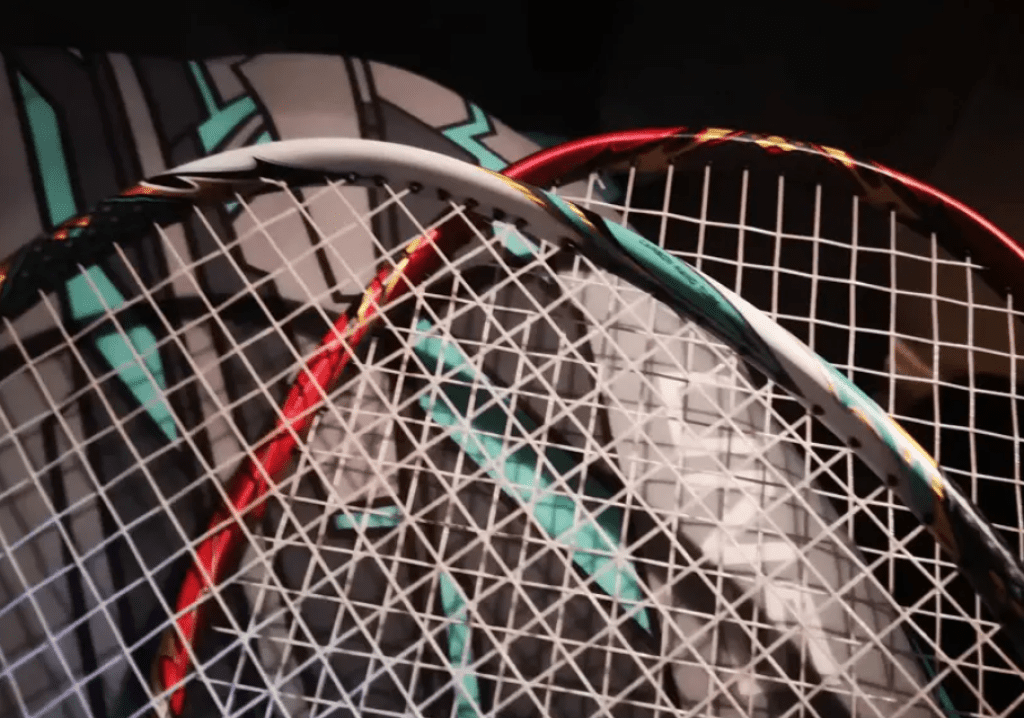
Under consistent stringing and physical conditions, I had the rare opportunity to experience both new rackets in parallel. Both Razer models delivered a solid performance in terms of product quality, with excellent paintwork and craftsmanship. The rackets are user-friendly and offer distinctive playability, aligning well with their premium pricing. However, the lack of weight detracts from a more substantial feel in feedback. With differentiated performance adjustments, the blue and red versions should have distinct entries in your equipment log.
Of course, many players are concerned about pricing. I bought these on a friend’s recommendation, and the seller currently offers a convincing discount. It’s worth checking out. The official price tag is no longer relevant.
